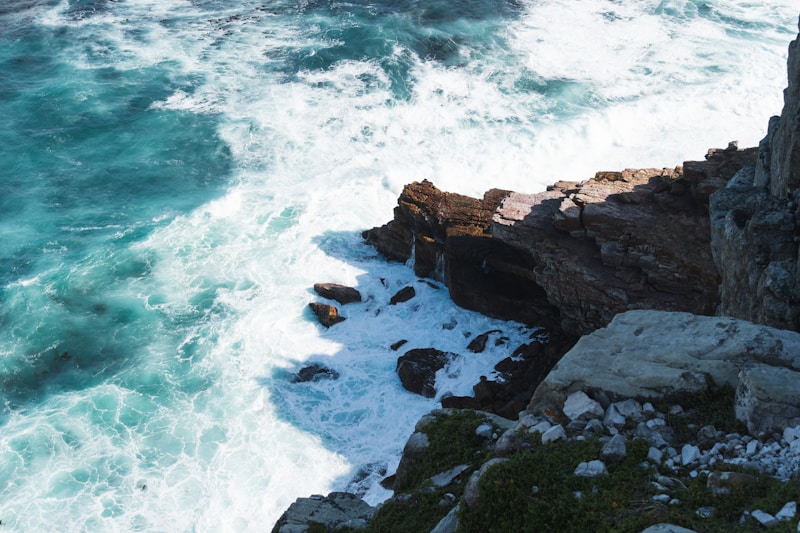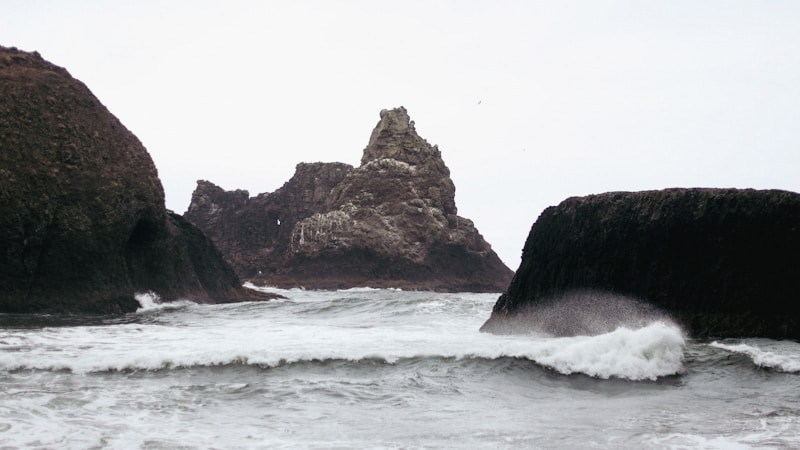Questions and Answers
Upon death, their hard parts accumulate on the ocean floor as sediments, and eventually may become the sedimentary rock ________.
limestone
Though limestone can form inorganically, the vast majority is formed by this biological process.Another example is marine organisms called radiolaria, which are zooplankton that precipitate ________ for their microscopic external shells.
silica
When the organisms die, the shells accumulate on the ocean floor and can form the sedimentary rock ________.
chert
An example of biologic precipitation from the vertebrate world is ________, which is composed mostly of a type of apatite, a mineral in the phosphate group.
Signup and view all the answers
The 3 apatite found in bones contains calcium and water in its structure and is called hydroxycarbonate apatite, Ca5(PO4)3(OH).As mentioned above, such substances are not technically minerals until the organism dies and these hard parts become ________.
Signup and view all the answers
Sublimation from a vapour. This process is somewhat rarer, but can take place at a volcanic vent, or deep in space where the pressure is near ________.
Signup and view all the answers
When magma is emplaced at depth or extruded onto the surface, it starts to cool and mineral crystals can form. This process is known as ______ - ______ reactions.
Signup and view all the answers
Solid-Solid reactions involve minerals reacting with other minerals in the ______ state to produce one or more new minerals.
Signup and view all the answers
Mineral formation can occur when magma cools down, when water from a mineral solution evaporates leaving behind the crystals, and when minerals precipitate out of ______.
Signup and view all the answers
A particular mineral cannot form unless the chemical elements necessary to make that mineral are ______.
Signup and view all the answers
The environments of mineral formation and growth geologically are highly varied, ranging from slow crystallization at high temperature and pressures of igneous melts deep within the Earth's ______ to low temperature precipitation from saline brine at the Earth's ______.
Signup and view all the answers
The natural environments of mineral formation are divided according to energy sources into major groups as: 1. ______ (hypogene): related to the internal energy of the earth – deep-seated processes in the interior of the earth and are associated with igneous activity.
Signup and view all the answers
Minerals in sedimentary rocks are either stable in low-temperature hydrous environments (e.g. ______)
Signup and view all the answers
Sedimentary minerals exhibit a range of solubilities such that the most insoluble minerals such as quartz, gold, apatite and diamond accumulate in the ______ detrital sedimentary rocks
Signup and view all the answers
Less resistant minerals such as feldspars, which weather to ______, accumulate in finer grained siltstones and mudstones
Signup and view all the answers
The most soluble minerals such as calcite, gypsum, anhydrite, and halite (rock-salt) are chemically precipitated in ______ deposits
Signup and view all the answers
Igneous rocks can be generally classed according to their silica content with ______-silica
Signup and view all the answers
Minerals in igneous rocks must have high melting points and be able to co-exist with, or crystallize from, silicate melts at temperatures above 800 º C.Igneous rocks can be generally classed according to their silica content with ______-silica (.5GPa)
Signup and view all the answers
Metals of the center and right-hand side of the periodic table most commonly occur in ______ minerals
Signup and view all the answers
High temperature hydrothermal minerals include gold, silver, tungstate minerals, chalcopyrite, bornite, the tellurides, and ______
Signup and view all the answers
Low temperature hydrothermal minerals include barite, gold, cinnabar, pyrite, and ______
Signup and view all the answers
Sulfide minerals are not stable in atmospheric oxygen and will weather by oxidation to form ______, sulfates and carbonates of the chalcophile metals
Signup and view all the answers
Such deposits are called gossans and are marked by yellow-red iron oxide stains on rock surfaces. These usually mark mineralized zones at ______
Signup and view all the answers
In geologic environments where mineral formation is taking place, the various chemical elements compete with one another to form stable ______
Signup and view all the answers
Electrons orbit around the nucleus in different shells labelled as K, L, M, N, etc., based on the ________ quantum number
Signup and view all the answers
The K-shell can have ________ electrons
Signup and view all the answers
Isotopes are atoms of the same element with differing numbers of ________
Signup and view all the answers
Some isotopes are unstable which results in ________
Signup and view all the answers
Elements with similar configurations of outer shell electrons have similar ________ properties
Signup and view all the answers
Based on the energy levels of the various sub-shells, the electronic structure of atoms can be filled in, forming the basis of the periodic table of the ________
Signup and view all the answers
Study Notes
- Minerals can form through various processes, including: sedimentation from biological sources, sublimation, crystallization from magma or liquids, and solid-solid reactions (recrystallization).
- Biological processes play a significant role in mineral formation, as hard parts of deceased organisms accumulate and eventually become sedimentary rocks like limestone and chert.
- Limestone can form through the precipitation of calcium carbonate from the shells and skeletons of marine organisms.
- Radiolaria, a type of zooplankton, contribute to the formation of chert through the precipitation of silica for their microscopic external shells.
- Bone, a biologic substance composed mostly of hydroxycarbonate apatite, contributes to mineral formation upon death.
- Minerals can also form through non-biologic processes, such as sublimation from a vapor, crystallization from magma or liquids, and solid-solid reactions.
- Heat is a measure of the intensity of atomic vibrations, and when the vibrations are violent enough, chemical bonds can break and minerals melt.
- Magma is molten rock with freely moving ions, which can form minerals when it cools and crystallizes.
- Minerals can form during solid-solid reactions, such as those that take place during metamorphism and diagenesis.
- Minerals form in various geologic environments, including igneous, sedimentary, and metamorphic.
- Igneous minerals form at high temperatures from silicate melts, and can be classified according to their silica content and the energy source of their formation.
- Sulfide minerals form from the chalcophile elements (metals on the center and right-hand side of the periodic table) and are most commonly found in hydrothermal environments.
- The electronic configuration of atoms plays a role in the types of minerals that can form, as elements with similar configurations of outer shell electrons have similar chemical properties.
- Isotopes, atoms of the same element with differing numbers of neutrons, can impact the atomic weight and stability of elements, such as potassium (K) with isotopes 39, 40, and 41, and the radioactive isotope 40K.
- The periodic table of the elements is based on the filling of atomic shells and sub-shells, with elements exhibiting similar configurations of outer shell electrons having similar chemical properties.
Studying That Suits You
Use AI to generate personalized quizzes and flashcards to suit your learning preferences.
Description
Learn about the processes involved in the formation of sedimentary rocks, including compaction, cementation, and recrystallization. Understand the types of minerals found in sedimentary rocks and how they are influenced by environmental conditions.




